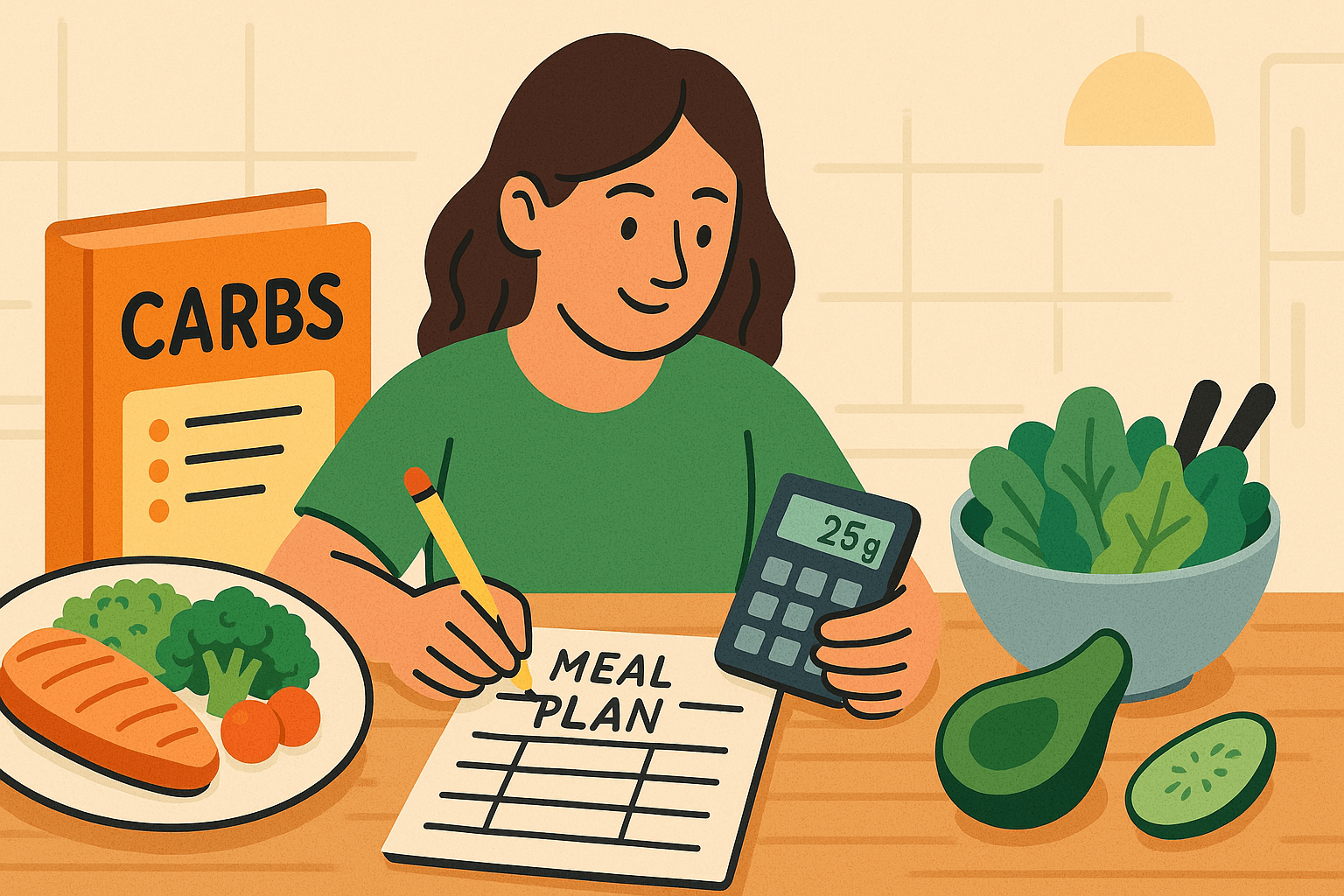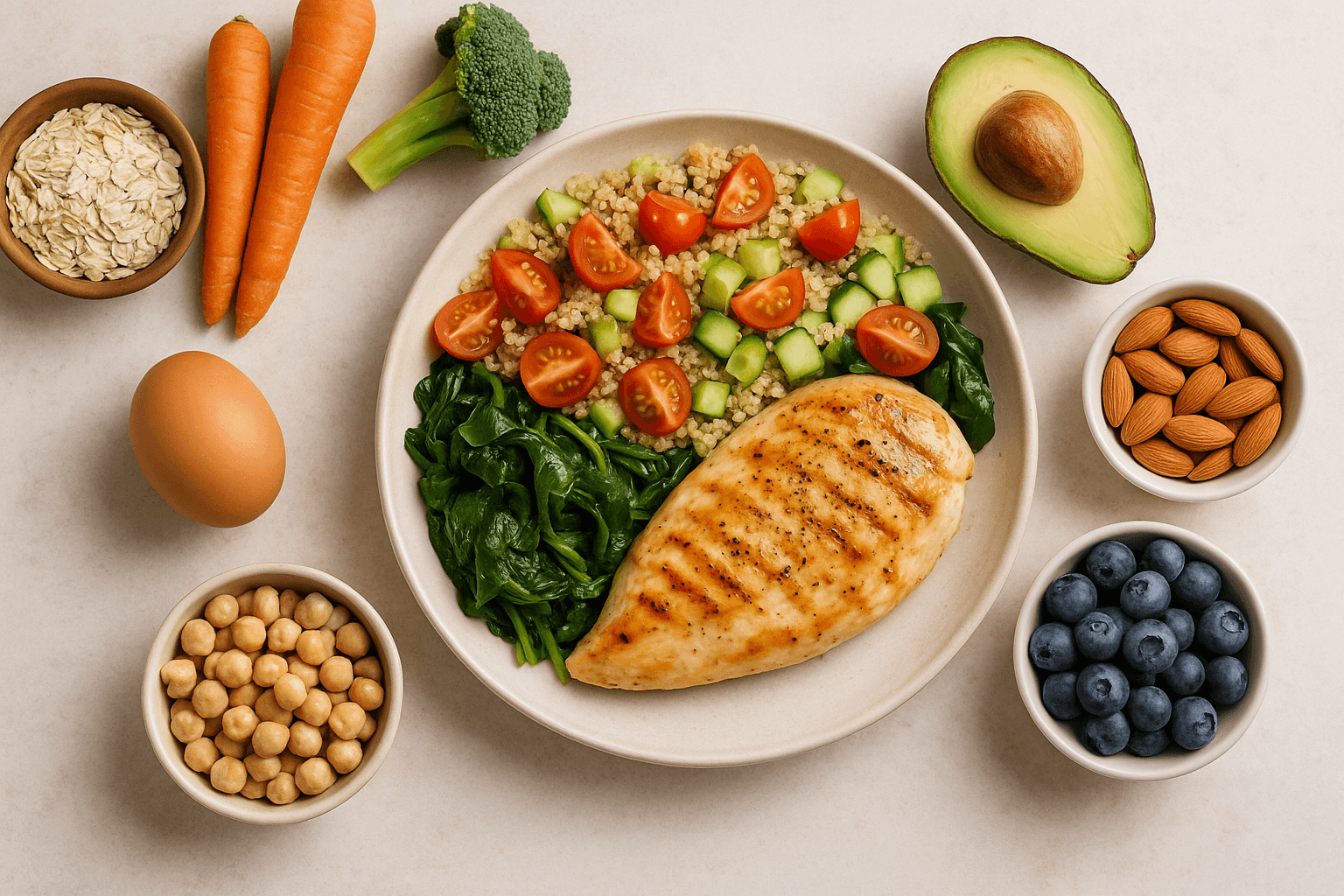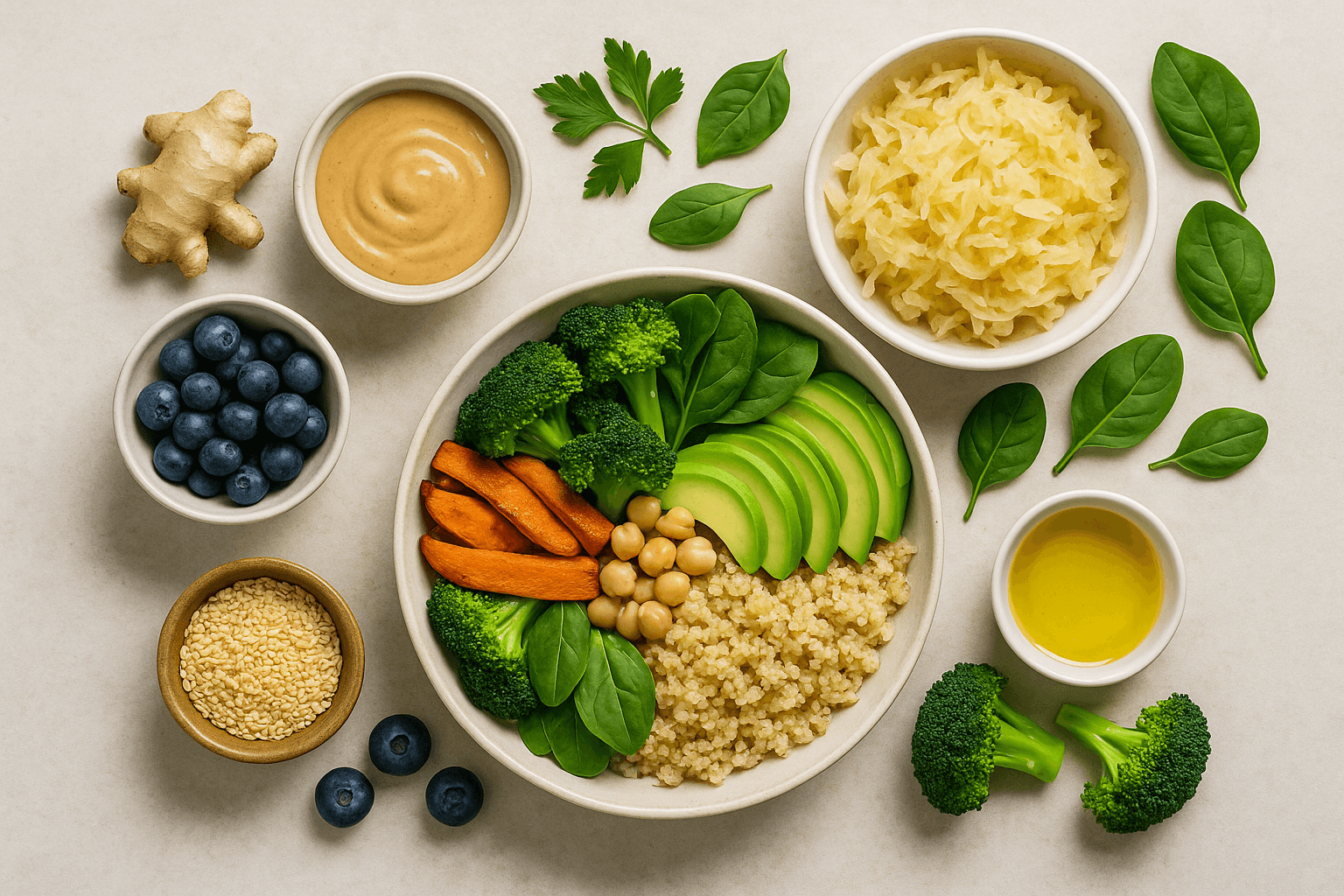CARB COUNTING MADE EASY: A SIMPLE MEAL-PLANNING GUIDE FOR PEOPLE WITH DIABETES
Published on August 21, 2025

Diabetes is not just a medical condition — it’s a journey lived daily in each meal, at every family gathering, with every bout of activity, and even in your thoughts about health and the future. For many, a diabetes diagnosis comes as a shock, bringing fear, anxiety, or even grief. But here’s what matters: living with diabetes is not a life sentence to bland food or social isolation. In fact, it can become a path to greater self-awareness, resilience, and even new pleasure in eating and life. With knowledge, tools, and the right mindset, diabetes can transform from a daily burden into an opportunity to honor, fortify, and celebrate your body.
What Is Diabetes? Understanding the Basics
Diabetes mellitus is a group of metabolic diseases—what matters most for meal planning is how your body handles glucose, your blood’s main source of energy.
Type 1 Diabetes:
An autoimmune condition, often diagnosed in children or young adults (but possible at any age). The immune system destroys insulin-producing beta cells in the pancreas. Without insulin (the “key” to let sugar into your cells), glucose builds up in your blood. Type 1 diabetes requires daily insulin, but with technology, education and self-care, people with Type 1D live rich, active lives—competing in sports, traveling, and achieving their dreams.
Type 2 Diabetes:
The most common type, typically in adults but increasingly seen in kids and teens. Caused by genetics, extra weight, and inactivity, the body can’t use insulin effectively (the “lock” is rusty) or doesn’t make enough. Healthy eating and exercise can help, but some need medication or insulin. Early action delays complications.
Gestational Diabetes:
Develops during pregnancy (usually temporary), but increases future risk of Type 2 diabetes for both mom and baby. Good prenatal management is essential.
Other Types:
Less common causes include genetic conditions, pancreatic diseases, or medications (like steroids). Treatment is more individualized, but healthy eating and activity always help.
The common thread: high blood sugar, which can damage blood vessels and nerves over time—impacting feet, eyes, heart, and kidneys. Research proves: steady blood sugar control means lower risk of complications and a longer, healthier life.
The True Strength of Nutrition in Diabetes
Ask 10 people what a “diabetes diet” means, and you’ll get 10 answers. Some imagine total sugar bans, others picture boring meals or food restrictions. Here’s the truth: Nutrition is your greatest tool for managing diabetes. “Diabetic diets” are out. Personalization, inclusion, and balance are in.
Key Principles
Quality AND Quantity of Carbs:
Not all carbs are equal! White bread, lentils, and berries all affect blood sugar differently, depending on fiber, protein, and micronutrients. Whole grains, beans, veggies, and fruits digest slowly for steady energy and feed good gut bacteria. Refined grains and sugary snacks spike blood sugar, then crash it. Learn what works for your body.
Glycemic Index (GI):
The GI ranks how foods raise blood sugar. Low-GI foods (like lentils or apples) digest slowly. High-GI foods (white rice, sugary cereals) spike sugar quickly. Glycemic load (GL) also considers portion size. Combining carbs with protein, healthy fats, or fiber “slows the spike” for steadier blood sugar and energy.
Meal Timing and Consistency:
Eat regular meals and snacks throughout the day to stabilize blood sugar and avoid crashes, fog, or irritability. Skipping meals or eating big portions can make sugar swings unpredictable, especially if you take insulin or certain meds. A relaxed, regular routine is optimal.
Portion Awareness and Mindful Eating:
Ditch deprivation and strict rules. Tune into real hunger and fullness, enjoy your food, and stop when you’re comfortably satisfied. Mindful eating reduces stress, helps digestion, and boosts your relationship with food.
Personalization:
No one “perfect” plan exists. What works for someone else may not fit you. Food traditions, preferences, schedule, and goals matter. Work with a dietitian or educator to tailor a plan for you.
Building a Diabetes-Friendly Plate: Your Simple Visual Tool
No need for long forbidden food lists or counting every calorie. The diabetes plate method is simple and works anywhere—at home, restaurants, or parties.
Half your plate: non-starchy vegetables
Leafy greens, broccoli, zucchini, tomatoes, bell peppers, mushrooms, carrots—low in carbs, high in vitamins, minerals, antioxidants and fiber.
Quarter plate: lean protein
Chicken, turkey, fish, tofu, eggs, beans, lentils, low-fat cheese. Protein helps muscles, satiety, and slows carb absorption for steadier sugar.
Quarter plate: healthy carbs
Whole grains (brown rice, quinoa, barley, whole-wheat pasta), starchy veggies (sweet potatoes, corn, peas). Good for energy and nutrients, but watch portions.
Healthy fats:
Add a spoon of guacamole, a few nuts, seeds, drizzle of olive oil, or a couple olives. Fats add flavor, satisfaction, and support heart health.
Simple Tips for Meal Success
Begin with veggies
Prefer whole, unprocessed carbs
Add protein to every meal
Eat healthy fats (in moderation)
Stick to water, black coffee, or tea (avoid sugary drinks; limit alcohol)
Carbohydrate Counting: Freedom Through Knowledge
Confused by carbs? You’re not alone! Carb counting helps you enjoy more freedom and control, especially if you use insulin or certain meds.
One “carb choice” = about 15g of carb (one small apple, a slice of bread, ½ cup cooked grains, or 1 cup milk).
Read nutrition labels, use measuring cups, and log your food and blood sugar responses.
Aim for even carbs at each meal/snack—needs vary, so ask your care team for guidance.
With practice, you’ll estimate carb content “by eye,” making eating out or travel less stressful.
Carb counting isn’t about giving up favorites; it’s about smart choices that fit your lifestyle.
Exercise: The Forgotten Tool in Diabetes Management
Regular exercise is a powerful “medicine” for diabetes, boosting mood, focus, and body function.
Aerobic activity:
Aim for 150 minutes/week (brisk walking, swimming, cycling, dancing). Improves glucose use and insulin sensitivity.
Strength training:
2–3 times/week (weights, resistance bands, yoga). Builds muscle, boosts metabolism, lowers injury risk.
Flexibility & balance:
Stretching, tai chi, pilates—keeps joints supple, reduces falls (especially for older adults).
Check blood sugar before and after exercise, and carry fast carbs if you use insulin or sulfonylureas.
Tackling Common Myths (and Mistakes!)
“You can’t ever have sweets again.”
Myth! All foods can fit with planning. Enjoy sweets in moderation, as part of balanced meals, and savor them mindfully.
“Fruit is off-limits.”
Wrong! Whole fruits (berries, apples, pears, citrus) are packed with fiber, vitamins, and antioxidants. Fruit juices and dried fruit are more concentrated, so go easy.
“All carbs are bad.”
Nope. Your body and brain need carbs. Focus on fiber-rich, minimally processed kinds and reasonable portions.
“Low-carb all the way.”
Lower-carb can help some, but many thrive with moderate carbs—especially from veggies, beans, fruit, and whole grains. Mediterranean and DASH diets support great results.
“Diabetes means you’ll have complications.”
Not true! With today’s tools and care, most people with diabetes live long, healthy, active lives. Progress and early care make a big difference. Don’t let fear define you.
More Than Food: The Bigger Picture of Diabetes Care
Stress management
Chronic stress spikes blood sugar. Practice deep breathing, meditation, time in nature, or activities you enjoy.
Medication and monitoring
Stick to your meds and check blood sugar regularly. Ask your care team about CGMs or smart devices for easier tracking.
Good sleep
Aim for 7–9 hours. Poor sleep worsens insulin resistance and makes blood sugar harder to control.
Support system
Don’t go it alone! Lean on family, friends, support groups, or online communities for encouragement.
Self-advocacy
You are the expert on your life and body. Ask questions, seek second opinions, and be an active partner in care.
Special Situations: When More Guidance Is Needed
Pregnancy
Manage blood sugar closely for your health and baby’s. Get regular monitoring and expert support.
Older adults
Adjust for changes in appetite, activity, or medications. Hydration, protein, and safe routines are key.
Kids and teens
Growing bodies, activities, and emotions impact blood sugar. Pediatric endocrinologists and dietitians help families succeed.
Travel, illness, and holidays
Plan ahead, bring supplies, and monitor sugar more often during changes to routine.
New Research Highlights
Mediterranean and DASH diets
Lower A1C, better cholesterol, heart protection.
Plant-based eating
More fiber, less animal fat—may reduce inflammation, cholesterol, and sometimes reverse early Type 2 diabetes.
Intermittent fasting, keto
Helpful for some, too restrictive for others—personalization is key.
Gut microbiota
A high-fiber diet supports good gut bacteria, reduces insulin resistance and inflammation.
Personalization
Genetics, culture, lifestyle and preferences matter more than ever.
Flourish, Don’t Just Survive! A Dietitian’s Final Message
Diabetes isn’t the end—it’s an invitation to shape your future, discover your strengths, and celebrate each healthy habit. Every small step counts. Each meal is a fresh start, every day an opportunity to move, connect, and thrive.
You’ll have tough days and easy days. Progress, not perfection, is the key. Science is advancing, support is growing, and you are not alone. Trust your body, stay curious, and take every small step as a win on your path to living your healthiest, happiest life.








